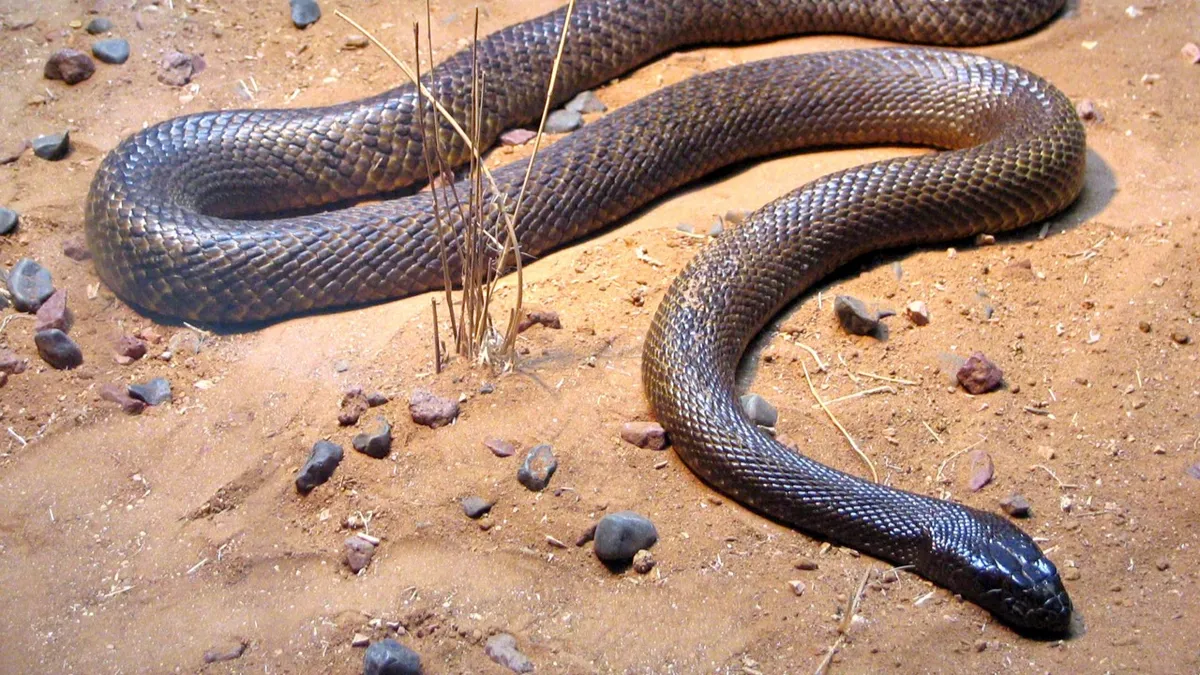Mother Nature has bestowed many wild and wonderful means upon her animals for defending themselves, but none of these methods, quite literally strike more fear into the hearts of humans than deadly venom. Find out which creatures carry the deadliest brew of toxins and are ready to strike!
Before you dig your fangs into this collection you might want to remind yourselfwhat is the difference between poison and venom.
Most venomous fish – the stonefish
Lurking in the costal waters of the Indo-Pacific region lays the stonefish, a deadly fish that secretes its toxic venom from large spines that stick out of their dorsal fins when threatened. If you are unlucky enough to stomp on this camouflaged creature, the amount of venom it will squirt is proportional to the pressure you give, so tread lightly if you want to survive.
It is also tremendously ugly – avoid!
Most venomous snake – the Inland taipan

Snakes always slither and slide their way into stories of the deadliest animals on the planet, but the one that packs the most venomous punch in its pincers is the inland taipan, found in some of the most remote parts of Australia.
The deadly cocktail of neurotoxins, haemotoxins, myotxins and enzymes found within the inland taipan’s jaws make it drop-for-drop the most lethal snake venom, with one bite enough tokill 100 adults. But don’t ssssstart ssssssshivering in your boots if you’re planning a trip to Oz, these snake are not very common and are, quite frankly, sissies that are much more likely to slink away before injecting you with their terrifying toxins.
Most venomous spider – the Brazilian wandering spider

As if spiders weren’tterrifying enough, with their eight gangly legs, multitude of creepy eyes and ability to scuttle into every nook and cranny of the house, some of them are deadly!
Fortunately, none of the spiders that are native to the UK will deliver a deadly dose of venom – you have to travel to Brazil for that luxury. There you can come eye-to-eyes with the deadlyBrazilian wandering spider, with toxin so strong that it can kill a mouse with only 6 micrograms of venom. To put that into perspective, you would need 110 micrograms of venom from the notorious black widow to kill the same mouse.
The effects of being bitten by thePhoneutria nigriventerrange from paralysis, painful inflammation, loss of muscle control and even priapism. If you’re scratching you head as to what apriapismis then we’ll just let you work it out from what scientists are using the venom to help cure –erectile dysfunction.
The effects of the wandering spider’s venom can lead to death, but there is effective antivenom available, so it is not common to hear of fatalities.
Most venomous ant - The Maricopa harvester ant

One nip on the leg from one of these angry ants is likely to fill your boots with what is believed to be the strongest insect venom in the world. It takes only 12 stings from thePogonomyrmex Maricopato see off a 2kg rat, and in humans the intense pain can last up to four hours.
If that wasn’t enough, one of the chemical compounds of the venom releases a pheromone that alerts all the other ants in the area to come in for an attack. It’s not just ants in your pants if you see one of these coming for you…
Most venomous mammal – the platypus
We know it sounds a bit weird having mammals on the list when so far it has been filled with weird creepy-crawlies, but believe us, there is an unusual mammal out with a sting in its tail - ok, we mean claws.
The Australian platypus is one of the most bizarre mammals on the planet, what with laying eggs and having a duck’s bill, so it comes as no surprise that they also have a spur in their hind legs that secretes venom into their unwitting victims. Fortunately it is non-lethal for humans, though the pain is apparentlyexcruciating.
It is believed that because the venom only really becomes active in males during the mating season, it is less of a defensive mechanism and more a way of showing who is boss to other competitors. And you thought going out on the town on a Saturday night was risky enough…
Most venomous crustacean - Xibalbanus tulumensis

Shellfish are another animal we rarely associate with being venomous, and for good reason – so far we have only discovered one venomous crustacean from a list of 70,000. TheXibalbanus tulumensis, a tiny remipede that lives in anchialine caves on the Yucatán Peninsula of Mexico, liquefies the body of its victim using venom similar to that of the rattlesnake, and is filled with paralysing toxins and digestive enzymes.
Don’t worry if you do happen to find yourself swimming in the waters of the Caribbean Sea - at only 30mm long this venomous critter is nothing to worry about.
Find out how scientists are using animal venom to create a new generation of wonder drugs in theFebruary 2016 issue of BBC Focus magazine.
Follow Science Focus onTwitter,Facebook, Instagramand Flipboard